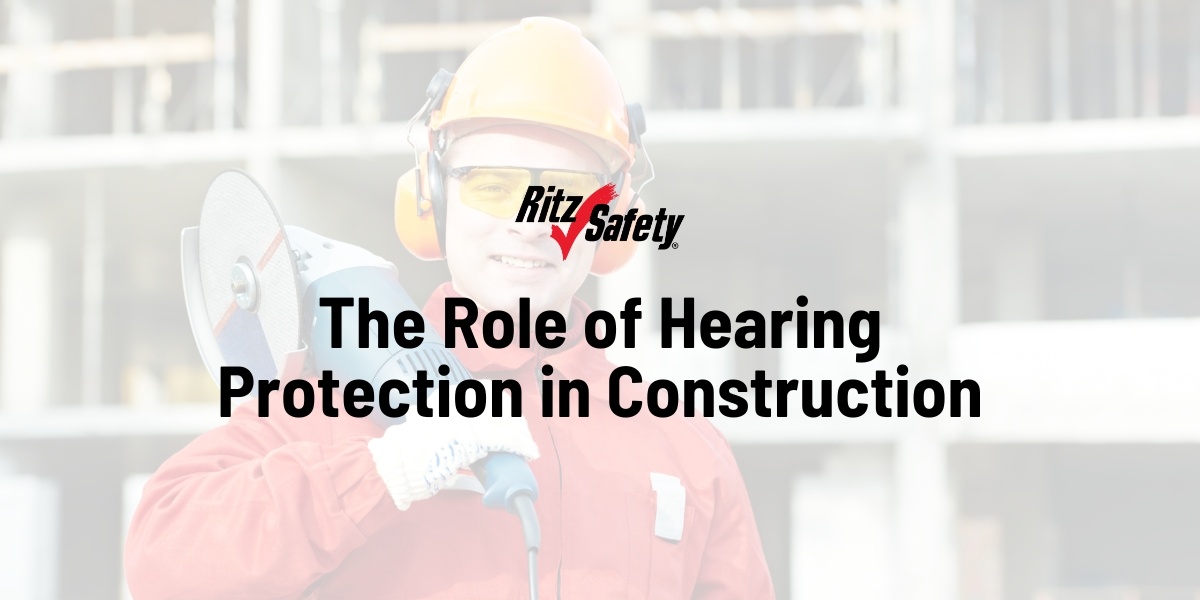
The Role of Hearing Protection in Construction
Imagine a construction site bustling with activity—the clang of metal, the rumble of heavy machinery, and the shouts of workers coordinating tasks. While all necessary, this brings about a not-so-silent threat: noise-induced stress and hearing damage. Keep reading to find out more about the need for hearing protection in construction, types of hearing protection, and the benefits it brings.
Regulations and Standards
Regulatory bodies like OSHA in the United States and similar agencies worldwide have established clear guidelines to address noise hazards in the workplace. OSHA, for instance, mandates that exposure to noise levels exceeding 85 decibels (dB) over an 8-hour workday requires employers to implement a hearing conservation program. This program includes conducting noise assessments, providing hearing protection equipment, training employees, and monitoring noise exposure levels regularly.
The Challenge: Noise-Induced Stress and Hearing Damage
Construction environments are notorious for their high noise levels, often exceeding safe limits. Picture a welder on a bustling construction site, exposed to the relentless roar of welding equipment emitting noise levels exceeding 100 decibels (dB). This daily barrage can lead to irreversible hearing loss over time, affecting not only the worker's ability to communicate effectively but also their enjoyment of life's simple sounds. Now, consider the heavy equipment operator maneuvering through a maze of activity, surrounded by the thunderous rumble of excavators and bulldozers generating noise levels up to 120 dB.
Beyond the immediate danger of impaired hearing, this constant bombardment of noise can trigger stress-related symptoms such as headaches, fatigue, and difficulty concentrating. Imagine a scenario where a construction worker, exposed daily to deafening noise, begins experiencing sleep disturbances, irritability, and reduced cognitive function—all classic symptoms of noise-induced stress. Such stress not only affects individual well-being but also impacts overall job performance and safety. For these workers, noise isn't just a nuisance—it's a pervasive threat to their health and productivity.
Moving to the assembly area, where hammers pound relentlessly, producing sharp, impulsive noise spikes of 130 dB or more. Imagine the strain on the hearing system as workers endure these high-intensity sounds day in and day out. Studies have shown that exposure to such impulsive noises can lead to not only hearing loss but also increased cardiovascular risk due to heightened stress responses.
In confined spaces like tunnels or interior construction sites, the echo of drilling machinery creates an acoustic environment ripe for hearing damage. Workers navigating these spaces contend with reverberating noise levels that can exceed safe thresholds, causing discomfort, disorientation, and long-term hearing impairment.
These real-life scenarios underscore the multifaceted challenge of noise-induced stress and hearing damage in the construction industry. From impaired communication and reduced job performance to long-term health implications, the consequences of unchecked noise exposure are profound and far-reaching. Addressing this challenge requires a comprehensive approach that prioritizes hearing protection as a fundamental pillar of workplace safety and worker well-being.
Types of Hearing Protection
To combat the perils of noise-induced stress and hearing damage, a range of hearing protection devices (HPDs) are available. Earplugs, earmuffs, and noise-canceling headphones offer varying levels of protection, catering to different job requirements and comfort preferences. For instance, earplugs are compact and convenient, ideal for workers who need mobility and versatility such as those working in confined spaces or those requiring agility. While, on the other hand, earmuffs provide superior noise reduction for high-decibel environments and are comfortable for extended wear.
At Ritz Safety, we understand the critical importance of high-quality hearing protection for construction workers. We offer a comprehensive lineup of hearing protection products tailored to the demands of the construction industry. Our solutions not only meet regulatory standards but also prioritize comfort and effectiveness in noise attenuation.
Explore our best-selling hearing protection perfect for construction:
Benefits of Hearing Protection
Beyond regulatory compliance, investing in hearing protection yields numerous benefits for construction workers and employers alike. Firstly, it prevents irreversible hearing loss, preserving workers' ability to communicate effectively and enjoy a higher quality of life. Moreover, reducing noise-induced stress fosters a healthier work environment, leading to improved morale, productivity, and overall job satisfaction. Employers also benefit from reduced absenteeism, lower healthcare costs, and enhanced regulatory compliance.
In conclusion, the imperative of hearing protection in construction extends far beyond legal requirements—it's about safeguarding the well-being and productivity of every worker. By embracing comprehensive hearing protection measures, we not only mitigate the risks of noise-induced stress and hearing damage but also create safer constructions sites for workers.
Want to learn more about hearing protection for the jobsite? We're here to help!







